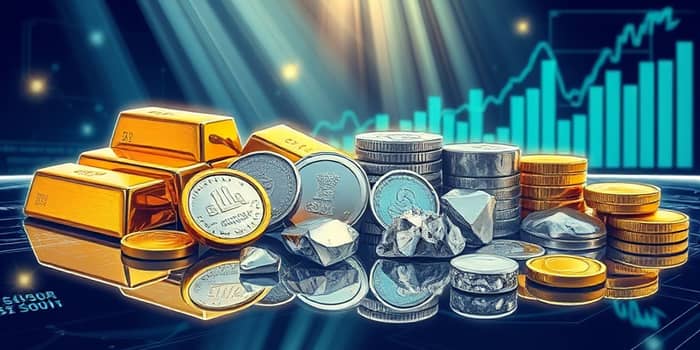
Precious metals remain one of the most enduring and trusted asset classes in global finance. From ancient civilizations valuing gold for its luster to modern investors seeking inflation protection, these metals have shaped economic narratives for millennia.
Today’s market offers a wide range of instruments that allow individuals and institutions to access metal exposure in physical, digital, and derivative forms. Understanding the landscape is essential for building a resilient and diversified portfolio.
Precious metals are naturally occurring metallic elements prized for their rarity, durability, and conductivity. The four primary investment-grade metals are gold, silver, platinum, and palladium. Emerging interest extends to rhodium, ruthenium, and iridium due to their high industrial value and constrained supply.
Each metal has unique applications: gold and silver in jewelry and electronics; platinum and palladium in automotive catalysts; rhodium and iridium in specialized industrial processes. Investors should recognize that market drivers vary by metal, reflecting both demand cycles and geopolitical factors.
The global precious metals market was valued at USD 327.47 billion in 2025 and is projected to reach USD 533.12 billion by 2032, representing a healthy compound annual growth rate of 7.2%. Growth is primarily fueled by expanding demand in jewelry, investment, automotive, and industrial sectors.
Key factors supporting this expansion include technological advancements in renewable energy—particularly solar panels requiring silver—and tightening emission standards driving platinum and palladium consumption in catalytic converters. Meanwhile, central bank purchases of gold continue to bolster its status as a safe-haven asset.
Precious metals offer several strategic benefits for investors seeking stability and diversification. They often perform well when traditional asset classes struggle, making them a critical component in holistic investment strategies.
Choosing the right vehicle depends on your investment goals, risk tolerance, and time horizon. Physical metals suit long-term preservation, while ETFs and digital tokens offer accessibility and liquidity.
Gold’s performance is closely linked to central bank policies, real interest rates, and geopolitical tensions. With jewelry demand softening in major consuming countries, a growing share of gold is being bought for investment purposes, reflecting its role as a cornerstone of financial stability.
Silver exhibits higher volatility due to its smaller market size and dual role in industry and investment. Forecasts predict a supply deficit of 1–2 million pounds in 2024–2025, driven by strong solar energy demand and constrained primary mining output.
Platinum and palladium remain sensitive to automotive and hydrogen economy shifts. Supply shocks and emerging fuel cell technologies can rapidly alter price dynamics. Investors may also explore emerging metals with constrained supply—rhodium, ruthenium, and iridium—each trading in tight markets with significant industrial applications.
Incorporating precious metals can improve risk-adjusted returns and reduce portfolio drawdowns. Financial studies demonstrate that a modest allocation—typically 5–10%—to metals can enhance diversification benefits without significantly sacrificing long-term growth.
When treated as a distinct asset class, metals can be balanced against equities, fixed income, and alternative investments. Rebalancing strategies help maintain target weights, enabling investors to systematically capitalize on metal price cycles and market volatility.
While precious metals offer unique advantages, investors must acknowledge key risks:
Digital tokenization of precious metals is redefining how investors access this asset class. Blockchain platforms now enable fractional metal ownership, instant settlement, and transparent audits. These innovations blur the line between traditional finance and digital assets, attracting younger demographics.
Cryptocurrencies, often viewed as alternative safe havens, compete with gold and silver for speculative capital. The convergence of crypto and metal markets suggests a future where hybrid products dominate, combining the trust of physical metals with the agility of digital finance.
Precious metals remain a compelling option for investors seeking stability, diversification, and long-term wealth preservation. With a wide array of products—from bullion and ETFs to digital tokens—there is a solution for every risk appetite and investment horizon.
By understanding market dynamics, weighing product features, and recognizing emerging trends, investors can harness the power of metals to build a balanced and resilient portfolio. As technology and innovation continue to evolve, precious metals will undoubtedly retain their central role in global finance.
References













